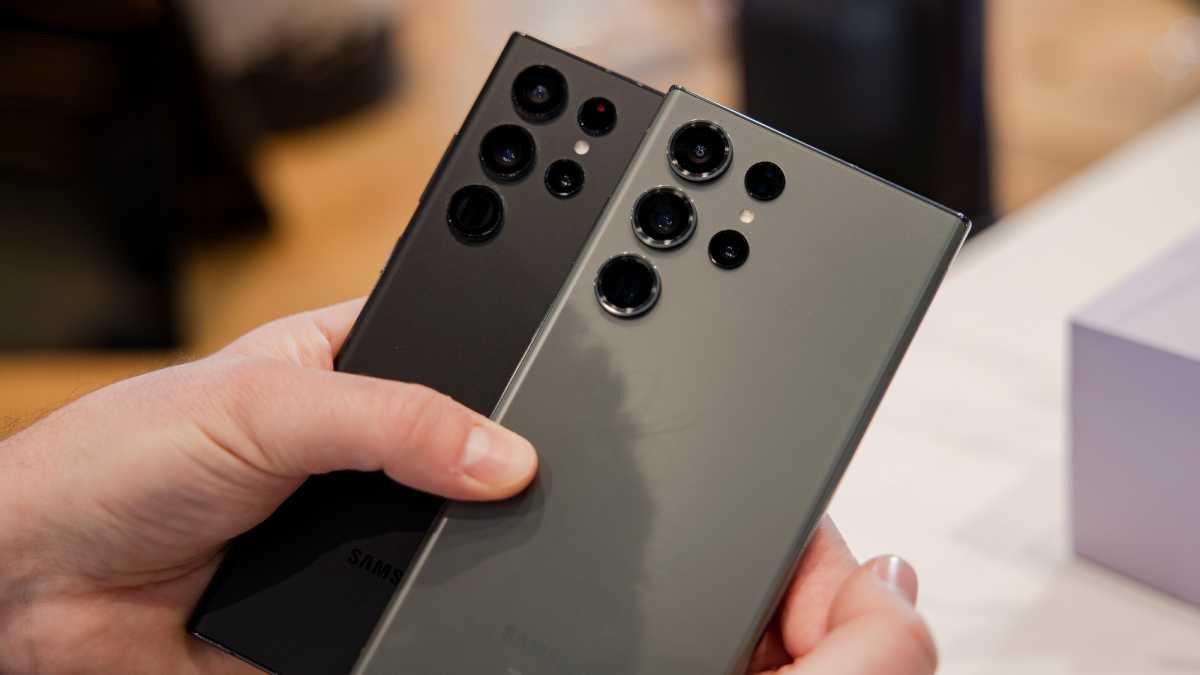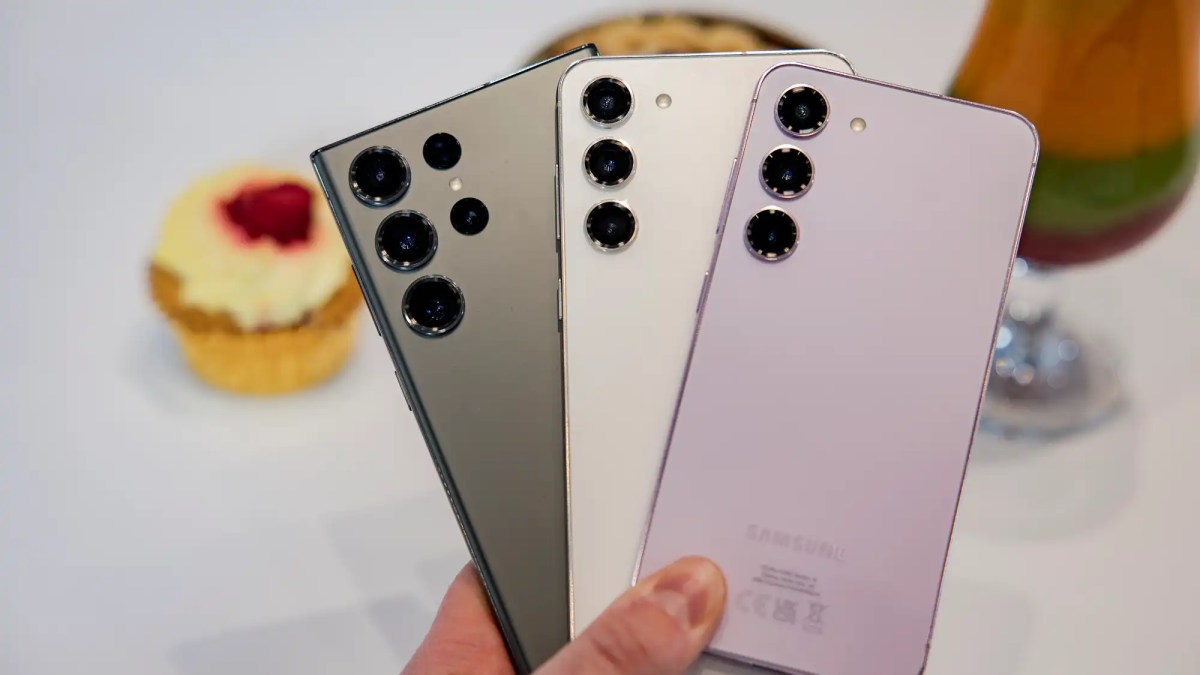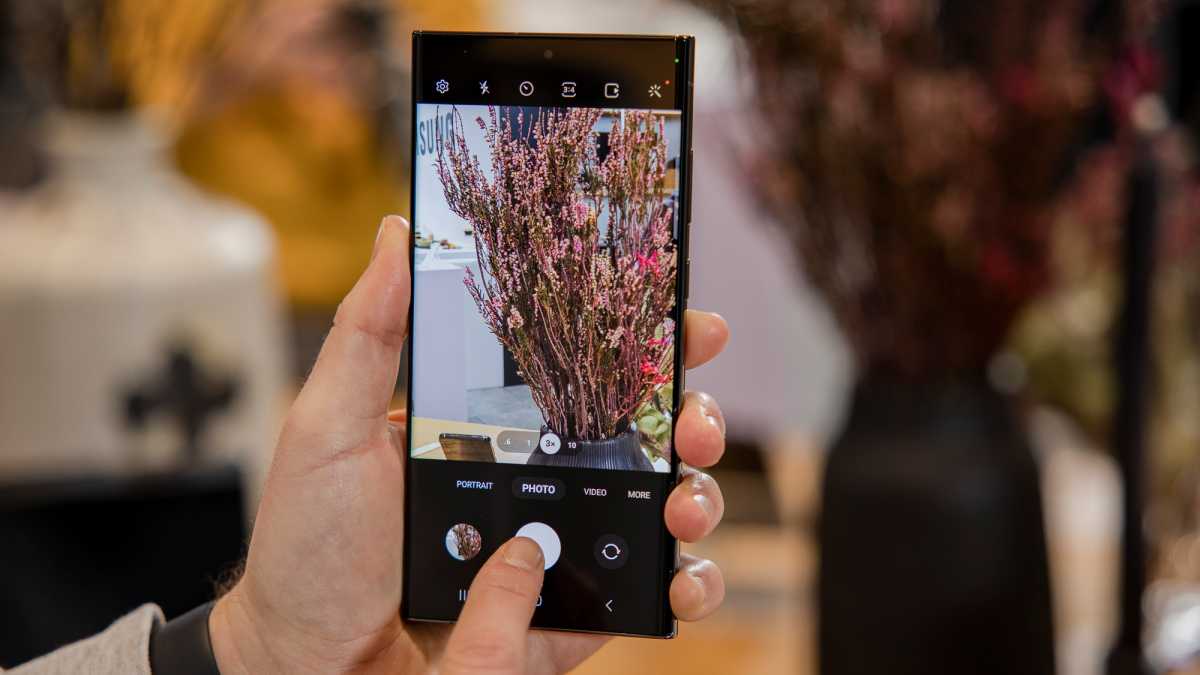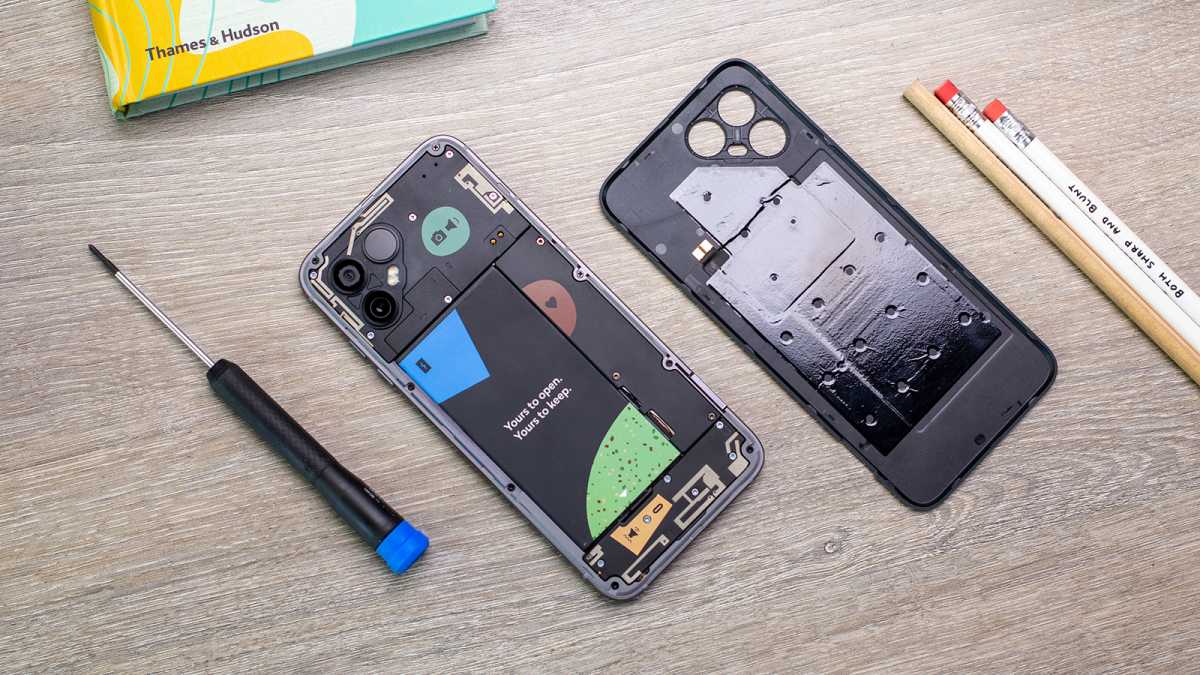The new Samsung Galaxy S23 Ultra looks exactly the same as 2022’s Galaxy S22 Ultra. Look art the image below and try to spot the differences.
This is because it is practically the same phone. Samsung can’t even be bothered to try and hide it.
How can it when squared off corners with the same size screen house a phone with an S-Pen stylus and five circular camera cut outs on the back? Put the two phones side by side and you’ll struggle to tell them apart.
The S23 Ultra gets the latest Snapdragon 8 Gen 2 chipset, a 200Mp main camera, and a few new software tricks, but really this is evolution, not revolution.
Qualcomm equipping the S23 with a special version of the 8 Gen 2, with a CPU clocked at a higher peak speed of 3.36GHz, is itself proof that smartphone differentiation in 2023 is hardly accessible and clear to most consumers.

Dominik Tomaszewski / Foundry
My colleague Dom Preston has all the details of the new S23 series if you want to know all the specs, and we’re rounding up the best pre-order deals if you are still tempted to grab one.
But those specs show that the new expensive smartphones on the market aren’t that different from the ones that came a year prior, and it doesn’t look like that will change any time soon.
It’s not just Samsung. Apple couldn’t be bothered to hide the fact that the iPhone 14 looks identical to the iPhone 13 and is practically the same phone. Ditto the Google Pixel 7 compared to the Pixel 6.
And while Samsung has tweaked the rear camera design of the new Galaxy S23 and S23 Plus, on paper the actual camera hardware of these models is identical to the S22 series. After you’ve stuck an S23 in a case, it looks like an S22, which looked like an S21.
And yes, the 200Mp sensor on the S23 Ultra will take superb photos because it’s doing clever pixel binning and improving low light performance. But the ultrawide and telephoto lenses are the same as last year, and after you’ve posted a compressed shot to Instagram, who is really going to be able to tell the difference?

Dominik Tomaszewski / Foundry
It points to the fact that Apple and Samsung, two of the biggest smartphone manufacturers, routinely sell their flagship smartphones in such numbers every year that they don’t have to try anymore. They can release the same phone with the same design and get the same or better sales figures, the same positive brand marketing, and the same four or five star reviews from tech journalists and YouTubers.
The latter is of course down to sites like this one, Tech Advisor. We try to review smartphones fairly and on the merits of the product rather than endless comparison – I chose not to mark down the excellent iPhone 14 in my review just because it is the same as the iPhone 13. But you should still, today, buy an iPhone 13 and save yourself some money, and I said in the review that you certainly shouldn’t upgrade from a 13 to a 14.
I predict I will say the same about an S23 Ultra once I’ve fully reviewed it. Pick up an S22 Ultra at a discount if you really like the design, S-Pen stylus, and versatile mobile camera set up. You will get the same experience.

Dominik Tomaszewski / Foundry
The same applies to the S23 and S23+ – an S22 or S22+ will serve you well for less money, unless you much prefer this year’s updated design. Apple and Samsung support their top phones with at least four years of software updates, more than good enough for a phone that you’re buying one year after its launch.
It’s easy to get caught up in the shiny new phone buzz, but gone are the days of the monumental design leaps: glass iPhone 4 to larger metal iPhone 5, plastic Galaxy S5 to sleek glass Galaxy S6.
Even the Galaxy S21 Ultra was a superb design leap ahead of the ugly S20 Ultra just two years ago.
But on recent evidence, Apple and Samsung can wait a whole year and put out the exact same phone and market it as a new one.
There is a difference in strategy between the companies – you can still buy an iPhone 12 (launched 2020) brand new from Apple whereas at the time of writing I could not buy any of the S21, S21 Plus, or S21 Ultra from Samsung (launched 2021).
I’m not sure which is worse.
It seems outlandish to suggest given the relentless annual cycle of smartphone releases, but what if Apple and Samsung didn’t release a new flagship phone line up every year? What if they followed the lead of Fairphone?

Henry Burrell / Foundry
In a media briefing, Samsung boasted the S23 Ultra has more components made from recycled materials than the S22 Ultra. Would it not be more eco-friendly to not make a new model at all, but rather sell the S22 series for longer and better support services such as battery replacements that means people don’t upgrade to a new phone before they need to?
The smartphone giants should be helping us to keep our phones longer, but the onward march of their yearly release cycle makes us think we need a new phone when the one in our pocket is already fine.
The one you have right now is probably functionally the same as the shiny new iPhone 14 or Galaxy S23 Ultra.
I’m not saying don’t get a new phone if you need one, but it’s undeniable that Samsung has done nothing new of note this year with the S23 series. The company should own the fact smartphone evolution has crawled to a halt by making fewer phones rather than chasing profits that drive perfectly decent phones into desk drawers and landfill long before their time.

